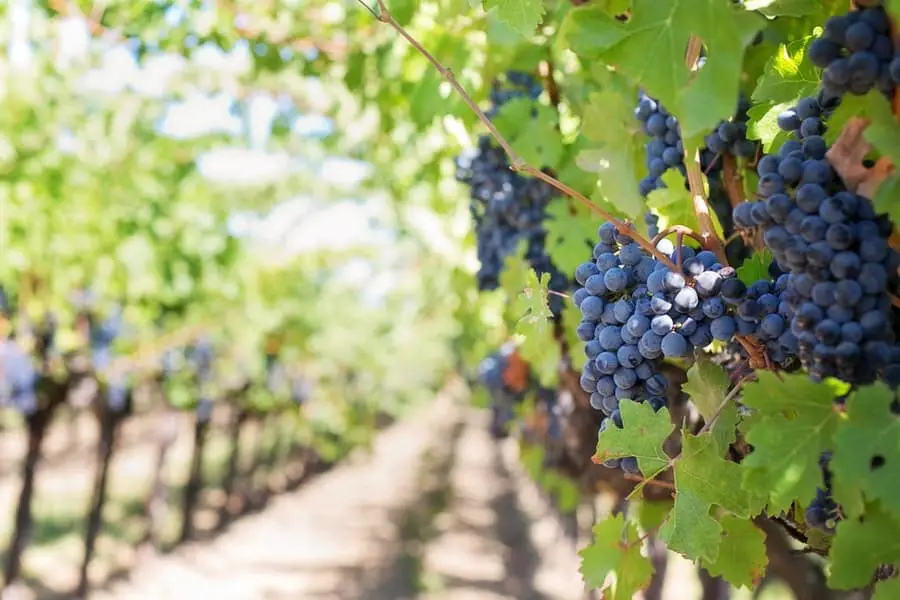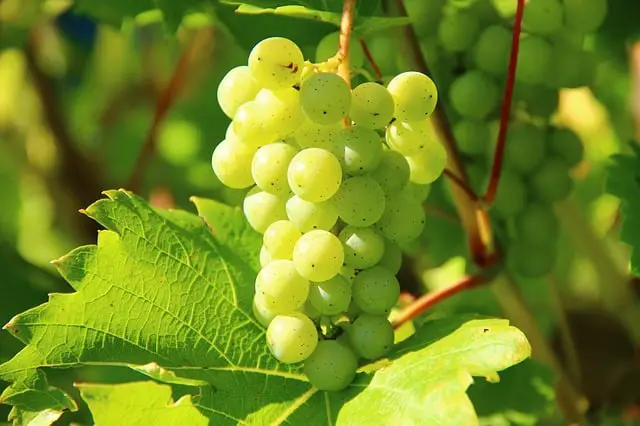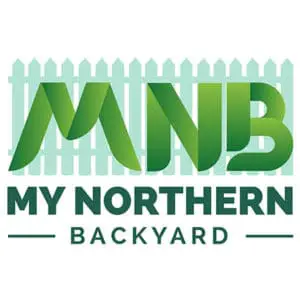
My wife and I recently went on a fantastic wine tour in the Niagara region with some friends and thoroughly enjoyed it. Because of the kind of tour it was we got to see and do a little more than normal on a standard tour and it really piqued my interest. One of the things we discovered is that in the Niagara region of Ontario Canada you need to have 11 acres of land to become and official winery. This got me thinking – what about growing your own grapes? What about making your own wine?
After a little searching around it seemed to me that there was a concept of a “backyard vineyard” but I couldn’t for the life of me find an actual definition of what a backyard vineyard actually was! So I started digging.
So what is a backyard vineyard? Simply put, a backyard vineyard is any backyard where you grow grapes.
Simple, right? Well, maybe not. How many vines do you need for a backyard vineyard? Why would you want one? Why wouldn’t you want one? Let’s dig in a little deeper.
Need bottles for bottling wine from your vineyard? Check out this selection at Amazon
The Backyard Vineyard

Based on what I could find, if you’ve always wanted a backyard vineyard you can easily get it done. Go to the local nursery in the spring, grab a grape vine, and plant it in the backyard. Boom! – Backyard Vineyard!
When you think of a vineyard, you’re probably thinking about rows and rows of perfectly spaced grape vines that are grown and harvested commercially for food, juice, or wine. Those are romantic visions of fantastic places (and I love a good vineyard), but it doesn’t have to be that way.
Commercial growers are primarily interested in the quantity and size of the grapes grown and put a lot of effort into producing the biggest and tastiest grapes they can. This means grafting every plant with the right root stock that will allow it to survive through all the local seasons, as well as judiciously pruning the plants to make sure that the grapes grow low to the ground in order to get the maximum energy from the roots. When commercial growers prune, they also use the specific format of the posts and wires they have to spread out the plant again to increase the number and size of the grapes and to get a very consistent flavor.
With a vineyard in your backyard you have the freedom to produce whatever makes you happy. When considering what a backyard vineyard is, first ponder what it could be. You could have the rows upon rows of a commercial-style vineyard. You could see yourself walking through them, taking care of each plant and making sure each one thrived. Of wandering through them with your partner and friends and enjoying your creation. Or you could have long, winding vines that grow over trellises, arches and pergolas and provide a beautiful shaded area for eating, relaxing, sitting, or simply enjoying the backyard. Want to change the look of a fence? Grow your grape vines along the fence to provide a natural barrier in the summer that will provide a little more privacy and a beautiful look. All of these scenarios can be considered a backyard vineyard.
Why Would I Want A Backyard Vineyard?
As far as I can tell, as soon as you plant your first grape vine in your backyard, you have a backyard vineyard. That doesn’t mean that it will be productive, or that you’ll get anything from it, or that you’ll even ever have grapes – it just means that you can tell all your social circle that “We Have A Backyard Vineyard” (I would say it with a slight sneer and my nose way up in the air, but that’s just me. 🙂 )
Ok, so say that you’re interested in more that just lording it over your social circle, and interested in an actual backyard vineyard. There are two purposes that you might have for your vineyard: 1. Producing Grapes, or 2. Looking Good.
Producing Grapes

The most obvious reason to have a backyard vineyard is to produce the fruit of the grape vine – grapes. These can be for eating or producing juice – or for the most common reason for starting a vineyard – wine!
If your goal is to produce grapes, it’s probably best to follow the standard vineyard planting methodologies that you’d see with a commercial grower. Build a 3-wire fence and grow the grapes on the bottom two wires. Prune the vines appropriately and make sure that they are producing a good harvest. For a very nice tutorial on how to grow grapes in your backyard for wine, you can check out this site.
Looking Good
If your interest is more in having a beautiful yard that includes a vineyard than in producing the fruit of the vine, you have many options in how to plant and grow your vines and the sky is the limit on what approach you would like to take with your plantings.
Growing grapes on an arbor, arched trellis, or fence – or any structure – really follow the same kind of path. You select, prune, attach, and train the vines up the structure to ensure that they grow up along the desired structure or path. A nice step by step tutorial can be found here that will give some great advice on growing and training your vines.
What Do I Need For A Backyard Vineyard?
Since you’ve decided on what kind of vineyard you want for your backyard, you know that this question is going to have two answers. What you need for a backyard vineyard will depend on what you want to use the vineyard for, and what you expect to get out of the vineyard when it’s in full bloom.
I’m going to leave it to the sites linked above (here for a grape-producing vineyard, and here for a decorative vineyard) to go into the details around the actual planting a pruning, but here are some of the things that you need to consider while planning your backyard vineyard
Soil: The soil composition is going to be very important for growing grapes – and what kind of soil you need is pretty specific. If you’ve got a soil with a lot of clay you may be out of luck for growing grapes. It could take significant work to change the soil composition in your back yard.
If you are planning on growing grapes for consumption you may want to get your soil tested. A quick search for your State or Province and soil testing will pop up a number of facilities sponsored or approved by the respective government to test your soil.
Type of Vine: The different types of grape vines will allow you to do very different things. If you’re interested in growing grapes in a more northern climate you likely have to find a hardy Canadian rootstock (which it turns out is now uses all over the world) and once it is sufficiently established, graft on the type of grape that you’re looking to grow. You want a rootstock that will be hardy enough to survive the temperatures in the midst of winter, and some warmer climate vines just won’t.
If you’re more interested in growing for decoration, you won’t need to do any grafting as you can simply use the more hardy varieties for the decorative growth itself.
Space: If you’re growing vines for decoration, space doesn’t really come into the discussion. You fit the vine where you can and train it where you’d like.
If you’re growing grapes for consumption, the biggest question that I could think of is: how many vines do I need for wine, and how much space do I need for those vines? You need about 20 pounds of grapes for a gallon of wine, which would be about 5 bottles of wine. Each vine should produce about 5 pounds of grapes in a backyard vineyard that’s well tended. So if you’re looking for 30 bottles of wine from your backyard vineyard, you’ll need 24-25 vines producing grapes.
How far apart you will need to space your grapes also depends on the type of grape that you’re going to be planting. It can vary widely – with some planting having vines 8 feet apart and 12 feet between rows, and some plantings being 3 feet apart with 3 feet between rows (check out the third heading in this link for a much more detailed discussion on this.) This means that a 25 vine vineyard can be anywhere from 12X12 ft to 48X32 ft.
Where Can I Have A Backyard Vineyard?
Different kinds of grapes grow well in all sorts of planting zones (see here for a discussion on planting zones.) Choosing the vine that you’re going to grow will depend on the rootstock that you choose and the grape that you graft on. Grapes will grow anywhere from zone 3 to zone 12, which translates to basically from a little north of the Canadian border all the way down to California.
Commercial growers have set up in several microclimates in the north (such as in BC, and in the Niagara region of Ontario) because they will give a consistent harvest that their business depends on. If your location has a harsher climate, you may not get the harvest that you’d like every year.
Why Wouldn’t I Want A Backyard Vineyard?
There are a couple of reasons that I could think of that you wouldn’t want a backyard vineyard:
- Grapes Vines Can Be A Lot Of Work. Whether you’re growing for decoration or consumption, grapes will take some effort. They definitely aren’t suited for a low maintenance backyard. You will need to prune them, you will need to tidy up what they drop, and in general you will need to care for them. This is doubly true if you’re growing grapes for wine and need to make sure that the plants are strong, healthy and producing. It would definitely be easier to go to a wine making store or just buy wine at the appropriate retail establishment – even if not as satisfying.
- Grape Vines Can Attract Animals And Pests. Fruit is going to be a target for birds, pests, and other creatures. If you have a beautiful decorative structure it could be an attractive spot for nesting for the aforementioned creatures.
- Grape Vines Can Be Messy. Not only can the plants themselves be messy – dropping fruit, leaves, and other detritus on your backyard, the animals that may come along with them. Any furniture, patios, or decks under grape vines will need to be regularly cleaned
If your lure for the vine is strong enough, these won’t be a detriment – but they are something to consider while thinking about a backyard vineyard.
The Next Steps if You Want a Vineyard
So now that you know what a backyard vineyard is, where do you go to figure out next steps? I would suggest taking a surf over to WineMaker Magazine and checking out this article on planning your first backyard vineyard. While they’re focused on growing for wine, they also have a great deal of information on what you need to know about successfully growing grapes.
Good luck on your backyard vineyard journey!

